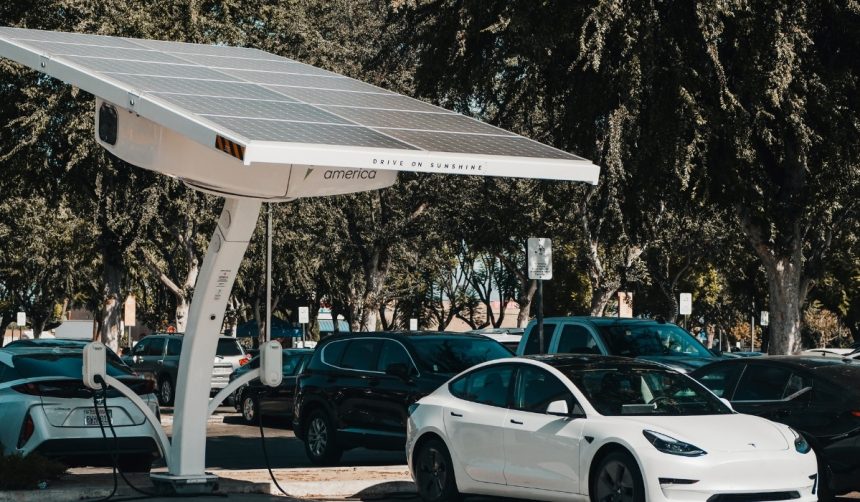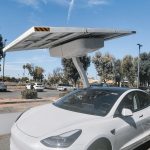Tesla is drawing attention with new signs that two new vehicles—a Cyber SUV and a smaller Cybertruck—may be under development. Enthusiasts have speculated for years about potential additions to Tesla’s lineup that could address market segments currently dominated by large SUVs and more compact pickups. As electric vehicle adoption grows, Tesla is exploring new options to meet the evolving needs of customers both in the United States and internationally. Observers note that these hints come as Tesla works to balance fan requests with regulatory requirements in key global markets.
Earlier announcements about potential vehicle expansions focused mainly on broadening Tesla’s product reach beyond the Model Y and Model X, but only recently have serious discussions and visual cues signaled that specific models like a full-size Cyber SUV or a compact version of Cybertruck could be close to realization. Regulators and fans alike previously pointed out the limitations of the Cybertruck’s size for different markets, but Tesla has offered few concrete updates—until now. Previous statements from executives hinted at interest but were non-committal regarding actual development. The company’s evolving approach appears influenced by both customer demand and the logistical challenges of adapting designs for a global audience.
Why does Tesla consider a Cyber SUV and smaller Cybertruck?
The push for a full-size Cyber SUV and a more compact Cybertruck has partly stemmed from repeated requests by Tesla’s fan community, especially those seeking alternatives to large combustion-engine SUVs like the Chevrolet Tahoe and Ford Expedition. Tesla currently lacks a product in the full-size SUV segment, placing it at a disadvantage against established competitors in the North American market. On the other hand, the current Cybertruck faces limitations in overseas markets where roads are narrower and regulations stricter. Adapting the lineup could allow Tesla to appeal to a broader range of potential buyers and address gaps in its electric vehicle range.
What has Tesla revealed about its potential new vehicles?
Recent communications and interviews indicate that Tesla is keeping its plans under wraps while acknowledging the high level of interest. During a Bloomberg interview, Tesla Chief Designer Franz von Holzhausen commented,
“Those are definitely things we’ve considered. Wait & see is probably the best way I can answer that.”
Although promotional videos and regulatory documents suggest prototypes or concept designs may exist, the company has stated it does not intend to use the Cybertruck’s stainless steel exoskeleton for new models. Nonetheless, Tesla may draw inspiration from the design while using alternative materials.
How might Tesla address international market requirements?
Developing a smaller Cybertruck could better serve customers in Europe and Asia, where the size and construction of the original model have faced scrutiny from regulatory bodies. A more compact version would address both safety regulations and consumer preferences for maneuverability on tight roadways. CEO Elon Musk has previously acknowledged the likely need for such a variant, stating years ago that a scaled-down Cybertruck could have a place in Tesla’s future lineup. According to Tesla’s recent regulatory filings, the use of a different structural material may further help address compliance in diverse international markets.
As automotive electrification accelerates, Tesla’s flexible strategy for its product offerings becomes increasingly relevant. The growing appetite for SUVs globally and practical pickups tailored to various markets places pressure on manufacturers to adapt quickly to new consumer expectations. While Tesla has been tight-lipped about production timelines or specifics, the company’s hints fuel ongoing speculation among investors, fans, and industry analysts. As the company weighs production costs, design considerations, and compliance hurdles, its next moves could reshape its role in vehicle segments traditionally led by other brands. For consumers, options such as a Cyber SUV or smaller Cybertruck could mean expanded choices in the electric utility vehicle segment and a step closer to meeting diverse transportation needs.
“We’re working on so many innovative & fun things,” said Tesla’s Chief Designer, reinforcing the company’s broad focus.
A potential Cyber SUV would allow Tesla to better compete with popular large SUVs, while a scaled-down Cybertruck could boost its international reach and navigate stricter regulations more easily. The trend toward customizing EV models for specific markets is growing, and Tesla’s measured communications reflect a desire to manage expectations without over-promising. Interested customers and analysts should watch upcoming regulatory filings, product announcements, and prototype leaks to stay informed on Tesla’s strategy as it expands into new vehicle classes. Investing in multiple sizes and types of electric utility vehicles may present manufacturing challenges, but it could pay off by increasing Tesla’s share in markets where it previously lacked presence.










